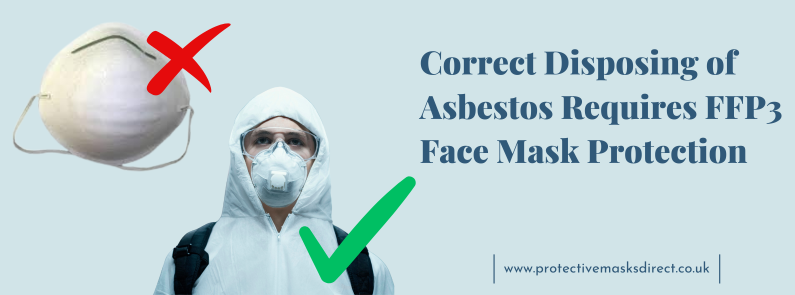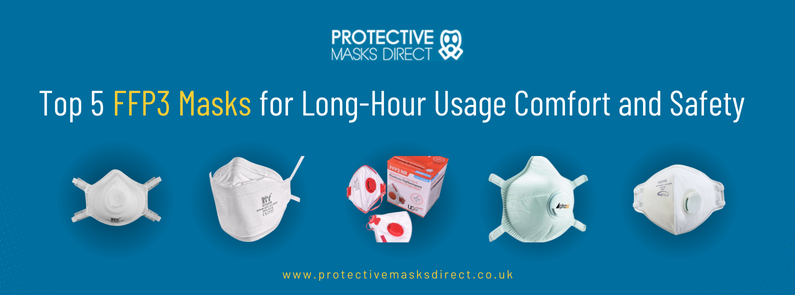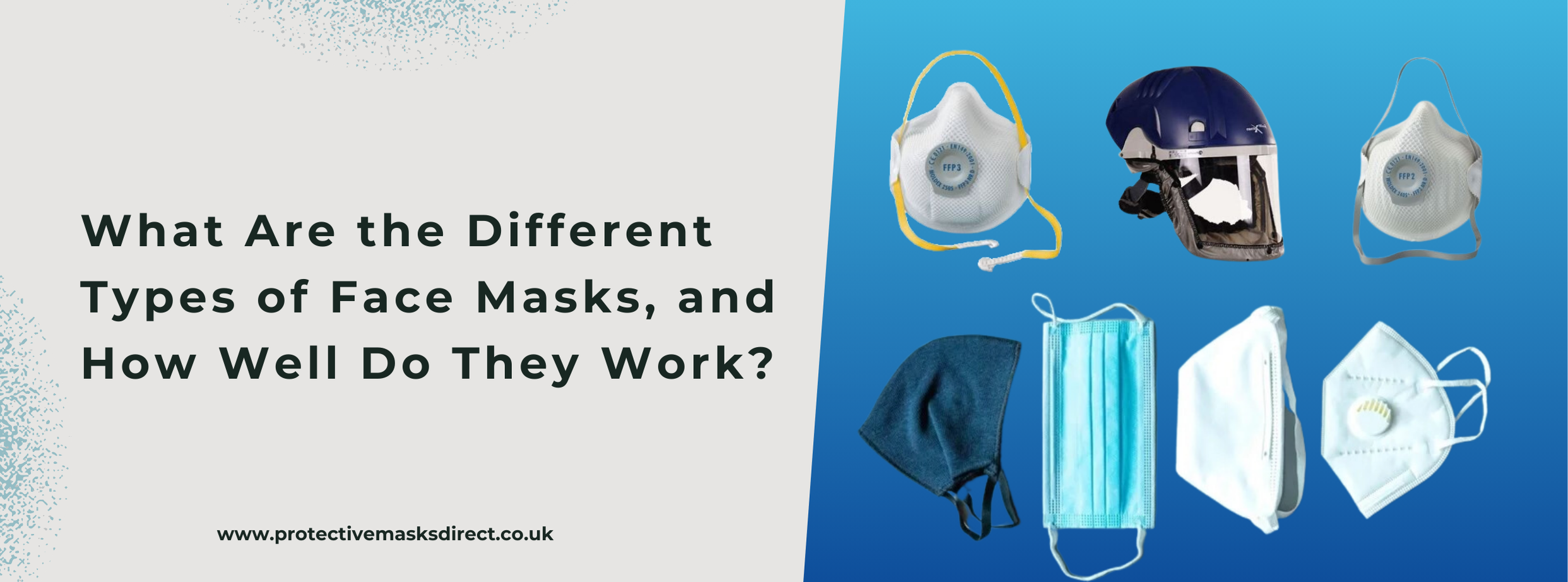
Recent studies have looked into the protective failings of ear loop masks in comparison to respiratory masks that use head strap attachments to provide a tight fit to the face.
The information below highlights the reduction in protection with ear loop masks & why a head strap attached mask should always be used when actual FFP protection is required.
The article covers two different types of masks “loose fitting Masks” & “tight fitting” protective FFP Respirator Masks”
Loose Fitting Masks (Basic Face Coverings/Surgical Masks)
Masks that have ear loop attachments are mainly used for loose fitting masks for example simple basic face coverings or surgical masks. Surgical masks are also available with head straps.
The term loose fitting is exactly that. These masks are termed loose fitting as they are designed to protect the wearer from sprays, splashes & large particle droplets only, as well as providing protection to others from respiratory secretions of the wearer.
These masks will not protect against small particles such as viruses etc due to gaps from loose fitting but would provide a degree of protection by reducing levels of covid load reaching the wearer.
Tight Fitting Masks (FFP3 Masks)
Tight fitting respirator masks (FFP) such as FFP3 masks need a close secure fit with the face to ensure that the mask is sealed against the face at all times taking into account facial movement & physical activity.
This type of respirator is designed to filter & protect against very small particles such as the covid 19 virus etc. These masks use head straps to ensure a tight fit is achieved with movement.
Poor Performance of Masks Secured Using Ear Loops
Whilst loose fitting masks are exactly as described a study by Sickbert-Bennett EE, Samet JM, Clapp PW, et al “Filtration efficiency of hospital face mask alternatives available for use during the COVID-19 pandemic” found that surgical masks with an ear loop design had a far lower filtration efficiency (FFE’s) than a surgical mask with head ties such as 38.1% vs 71.5%.
This was also reported by Chee Fu Yung, MBChB, MSt, 100 Bukit Timah Rd, Infectious Disease Service, KK Women’s and Children’s Hospital, Singapore 229899.
Chee Fu Yung also noted more worryingly that when tight fitting masks such as N95 masks (FFP2 Grade Masks) were investigated, a similar poor filtration efficiency (FFE) was seen with the bottom 6 FFE performing N95 respiratory masks all using ear loops to hold the mask in place on the users face.
The study found that the actual the level of FFE performance of 4 out of 6 of the N95 masks with ear loop attachment had similar performance and no better protection than a “loose fitting” surgical mask secured with head ties.
This shows that healthcare workers requiring a “tight fitting mask” to provide protection for high risk exposures would be at risk & not have sufficient protection from a respirator mask with ear loop attachment.
If a tight fit is not achieved & small gaps are created on facial movement or physical activity less protection will be provided. Even if the smallest gap is present instead of mask material there is obviously no protection & and increase in covid spread would be seen.
It was also noted that whilst manufacturers may have good filtration efficiency performance tests in the labs, the study highlights the need to expand approval criteria to include how the mask is held in place on the user's face & beyond the current filter performance only.
This study has also been replicated in the field.
Protective Masks Direct Ltd have been face fitting masks for businesses & the Healthcare industry for 18 years & it is only since the start of Covid that we have seen a few new websites selling ear looped masks purported to provide FFP3 protection.
Whilst in a laboratory test the mask filtration media may pass the FFP3 testing CE standard EN149:2001 & A1:2009 in real life with facial movement & physical activity we find that masks with ear loop attachments will overwhelmingly fail a face fit test.
An inadequate fit will reduce the protection provided by the mask and potentially lead to immediate or long-term ill health as well as putting the wearer's life in danger if required for high-risk protection.
Our own findings were also reaffirmed by the BBC investigation (Aug 2020). During this period the NHS was trying to upgrade the protective masks to FFP2 masks (Now FFP3) & reported on the 50 million FFP2 masks that had been imported by a non-specialist RPE company that were rejected by the NHS on safety concerns.
“To be effective these types of face mask need to fit tightly to create a seal between the mask and the wearer's face. Anyone who wears them for work is required to undergo a face-fit test.
Alan Murray, chief executive of the British Safety Industry Federation, said products with ear loops fail this test more often than those with head harnesses.”
The independent newspaper also reported similar, Dr Simon Clarke, associate professor in cellular microbiology at the University of Reading regarding using protective masks when high levels of protection are required.
“The mask needs to be fitted tight to the face to protect the wearer. The ear loops don’t fit the mask tightly enough.”
This was again reaffirmed by Robert Dingwall in the same article, professor of sociology at Nottingham Trent University and on the Department of Health’s Nervtag (New and Emerging Respiratory Virus Threats Group), which advises the chief medical officer on the threat posed by new viruses.
“Basically, NHS staff need a much higher degree of protection because they are dealing with a whole range of bacteria and viruses and wearing masks to protect themselves against airborne transmission of any of these.
“The masks the government has bought will just leak a lot around the edge and won’t do that job.”
The masks in question were the 50 million ear loop masks rejected as not fit for purpose.
Conclusions:
In situations where FFP protection is required such as with FFP3 masks for high level protection only masks with head strap attachments provide a sufficiently tight secure fit to the face that allows that protection to be afforded.
The studies also highlight the potential need for additional approval tests above filter performance to include mask attachment to the face. This would ensure that only masks that are actually fit for purpose are approved.




